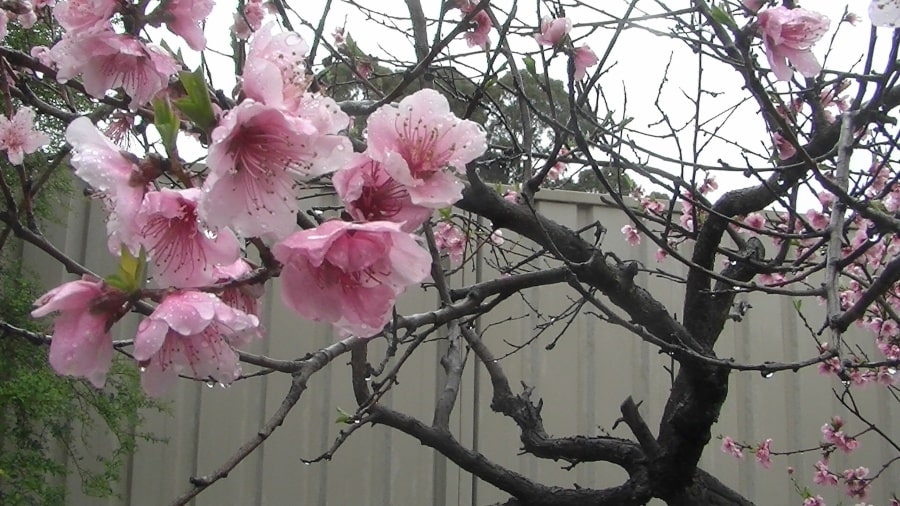It’s late October, which means that the nectarine tree in my backyard has dropped the last of the pink blossoms from late winter and early spring. It now has an abundance of new green leaves and the very beginnings of nectarine fruit – unfortunately it also has “peach leaf curl” that with some careful tending and management we hope to effectively treat.
I moved here seven years ago at the time of writing this, and this tree has been through a lot. The nectarine tree was already planted and well established before I moved in. The tree seemed very strong, and I wondered why the branches mostly grew out to the left.
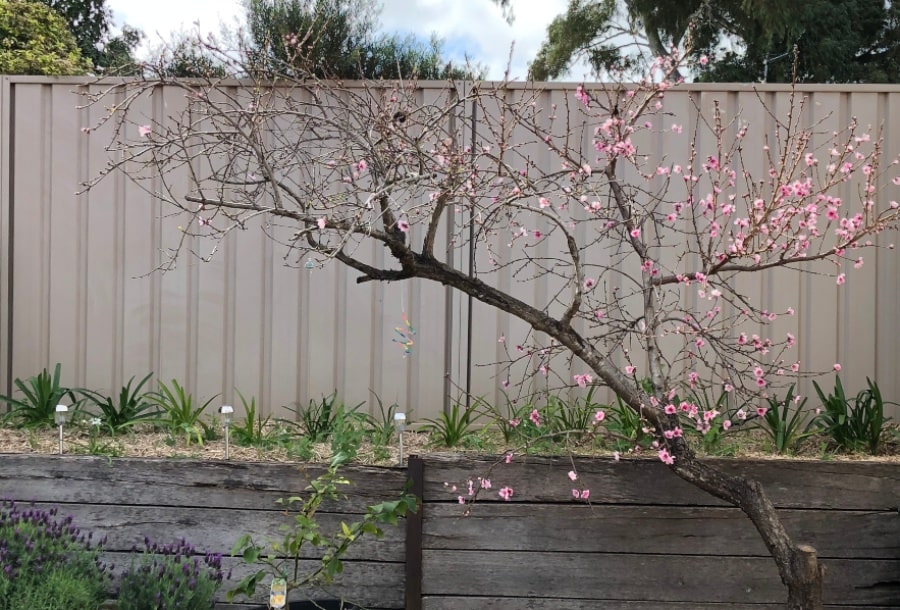
Watching the nectarine tree through the seasons and at different times of the year over the last seven years has taught me firstly to appreciate the good things as they’re happening; the small and big joys of life. Everything goes through cycles and passes, and the beauty of the nectarine blossoms lasts only a month before these blooms are replaced with vibrant green leaves.
I’m acutely aware that the pink blossoms of the nectarine tree are only going to last for a short time once a year in the nectarine tree’s yearly cycle, as is the case with many other plants and many other life experiences or events. With this knowledge, I always appreciate these blossoms just that bit more. The bees also thoroughly enjoy these blossoms and make the most of them too.
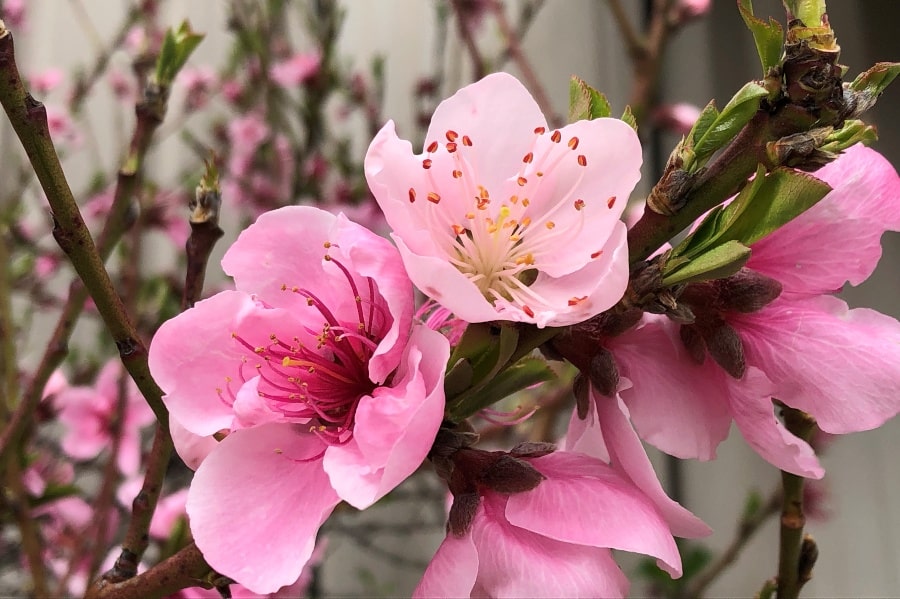
As the tree flowers, it’s important to allow the bees to come in and do their thing. When the tree is fruiting, it’s important to share these fruits with the bird life in the neighbourhood. The nectarine tree teaches me the importance of honouring the connection we have to nature, sharing, and not taking more than we need from the natural world.
We also need to give back more than we take.
When the nectarine tree produces fruit, there’s an abundance. We’re able to share the fruit with family and friends, enjoy some for ourselves, and leave some for the birds to enjoy. But one year this spelled trouble for our proud nectarine tree. In producing so much fruit, branches started snapping off under the weight of the fruit. In hindsight this wasn’t helped by lack of care on my part, not knowing how and when to prune it or what kind of care it needed, and just letting it go and do its own thing. I think it probably needed some help.
What the snapped branches due to the weight of the fruit made me think of is that taking on too many responsibilities and producing too much can lead to buckling under the strain and dropping things, sometimes important things. Be wary of over-production and what I call “achievement addiction” and the high that comes with getting things done. There’s nothing wrong with being efficient, getting things done and being productive, but remember where your worth comes from (hint: it’s not from how much you produce or what you’re doing necessarily).
On the other hand it could also be indicative of, when we have too many commitments (or in my case too many creative projects on the go), learning what can be let go of and what is really truly important to our core values and essence and how we want to live our lives.
After this, when it had stopped fruiting, I gave it some assistance with some gentle pruning and tidying up.
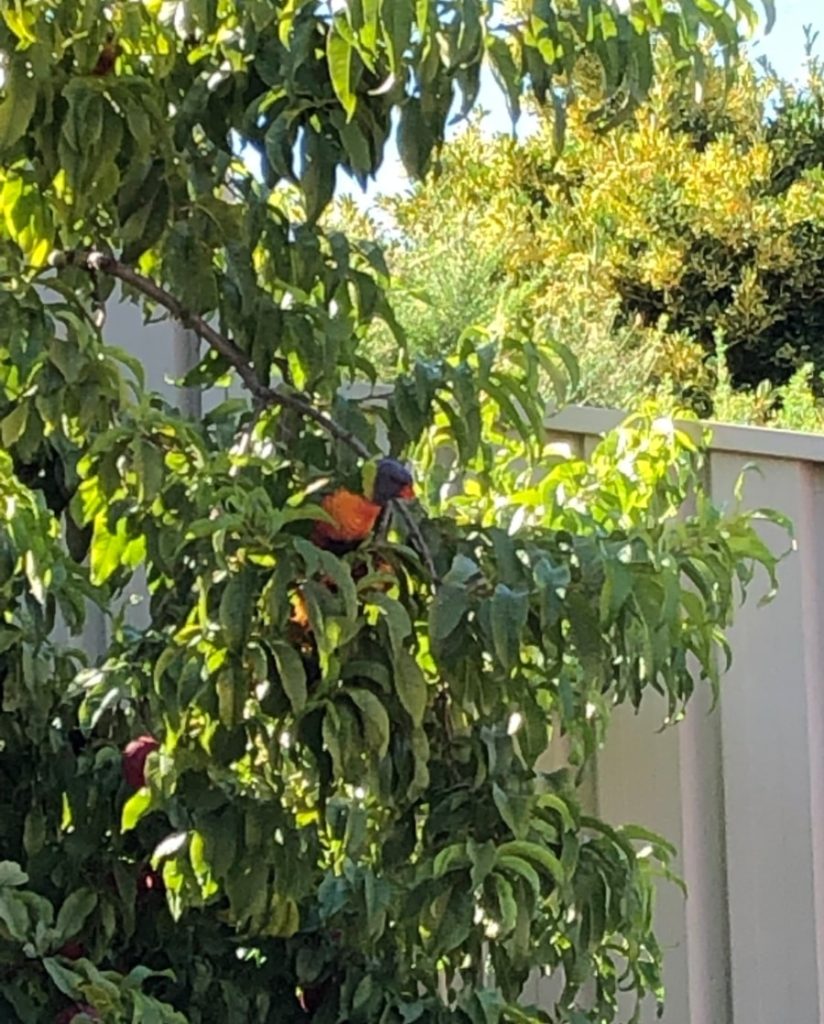
When the nectarine tree stops fruiting and the green leaves very gradually turn yellow, at a much slower pace than the flowers bloomed and the fruits emerged over spring and summer, this is where the tree teaches me the importance of letting go and resting. I wrote another blog post about this that you can check out here > Autumn Lessons.
In this season and phase of its cycle, the nectarine tree lays dormant, resting, recharging, going within and conserving its energy over winter. We could benefit from doing the same when the winters of our lives happen. I like to call this an emotional Hygge; not just in winter, but when I’m experiencing a feeling of too much or something has happened in my life that plunges me into a winter phase, I need to turn within, hermit up, and replenish myself – emotional Hygge in a nutshell.
When the nectarine tree is ready (and not a moment too soon or too late, in its own time), the buds of the blossoms begin to show, and soon the flowers emerge in all their pink glory, soon to be replaced by vibrant green leaves, and the cycle continues of fruiting, replenishing, new growth, repeat.
The lesson I learn from the nectarine tree and all forms of nature is that there’s a divine flow to life that we need to stop fighting against, stop forcing things to happen, instead allowing things to unfold naturally, with some planning and work on our part.
We each need to find for ourselves a balance and harmonious ratio between flowing with life and making things happen.
Just as the nectarine tree and all forms of flora bloom at just the right time, and rest when they need to, so can we bloom at the time that’s right for us, and rest when the time is right for our individual needs. For the nectarine, it blooms over spring, fruits over summer and rests in the winter. For the feijoa tree in our front yard, it maintains its leaves all year round with new growth happening in spring, flowers forming over summer, and fruiting in autumn.
Honour the cycles and times that are right for you to bloom, fruit, wind down, and replenish, just as the nectarine tree does.
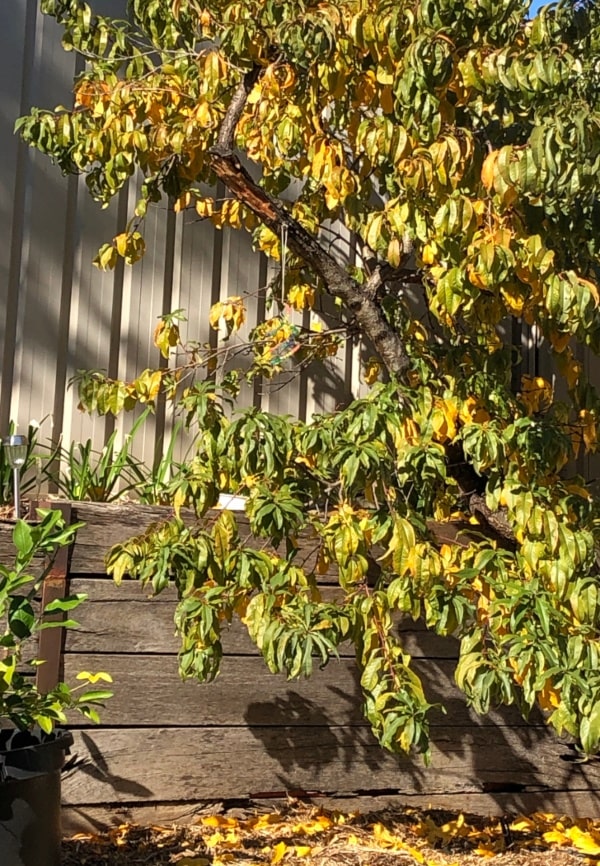
Unfortunately in the last couple of years our nectarine tree hasn’t been looking too healthy, with leaf curl and exposed roots that gradually decayed above ground. With roots rotting above the ground, sizable limbs dropped off. Keen gardeners and gardening experts may have the know-how to tell me why exactly this happened, but on a spiritual level, the message I got was that without a strong root system and foundation, certain things become unmanageable and unsustainable.
In this Spring Equinox blog post, I discuss similar concepts.
I also took the massive limb-dropping as a sign from the nectarine tree that I needed to drop certain things from my life in order to thrive and better bloom – this is the final lesson of the nectarine tree I have to share with you:
Letting things go can be painful but necessary. This is especially true if it’s a big part of our life, or identity, that we need to let go of in order to thrive; it may have served us in the past, but it’s time to let it go. I did this, and it was painful and uncomfortable to drop such huge and not-so-huge parts of my life (a combination of physical stuff, identities, and hobbies that were relevant to a particular season of my life, but not anymore). But ultimately I’m a happier and more fulfilled individual for doing so.
The nectarine tree is on the mend, not exactly thriving, but still flowering, blooming, and producing wonderful fruits.
Final Thoughts
The nectarine tree has shared so much wisdom (and many juicy nectarines) with me over the years, which I hope you can benefit from as well.
I’d love to hear your quiet thoughts about nature’s wisdom, tree wisdom, or any reflections on the lessons mentioned in this post.
You can post these in the comments below or reach out to me at [email protected].
Much love from me and my nectarine tree!

P.S. For extra content, updates and other good stuff, feel free to join The Quiet and Curious folk community by signing up to the email newsletter below:

